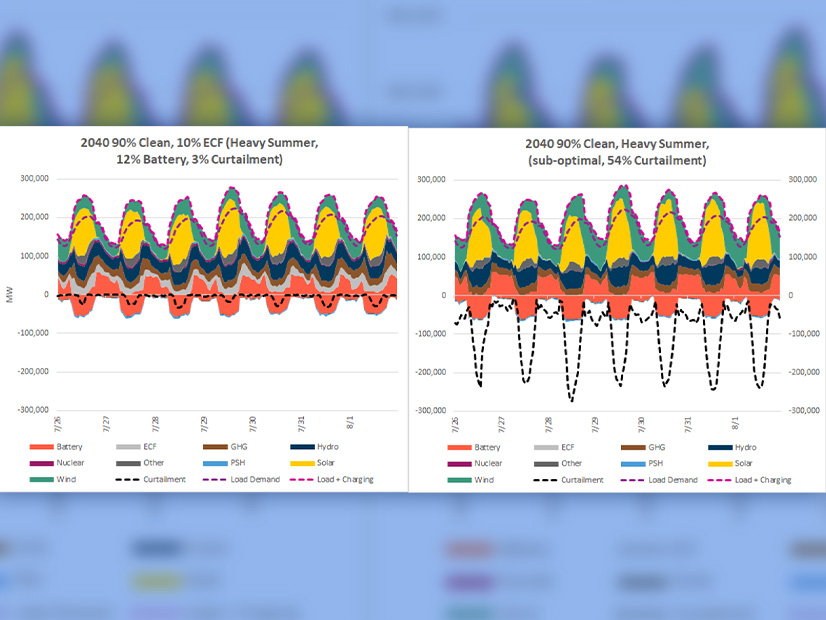
The West can reach 90% clean energy by 2040 with a combination of renewable resources and batteries, but the last 10% will require new types of flexible resources that can operate like natural gas plants to provide ramping, regulation and inertia on the grid, a study published Friday by WECC found.
“The results of the study indicate that clean energy above 90% will not be achieved economically and efficiently without including additional ECF [emerging clean and flexible] candidate resources,” WECC said in its 2040 Clean Energy Sensitivities Study. “These ECF resources will need to have performance characteristics similar to those of displaced gas-fired generation resources.”
The study did not give examples of the kind of resources that might replace gas plants.
“There are many promising clean energy technologies emerging that may provide the same performance characteristics as gas-fired generation resources,” it said. “No one can predict what new clean energy technologies may emerge by 2040 or what their performance characteristics will be other than to assert that they will be needed to achieve high levels of clean energy.”
The reason for the need, the study said, is that as renewable resources are added to the grid, it will eventually become saturated so that batteries are full, and “excessive” curtailment of wind and solar power takes place around the clock.
“At very high penetrations of variable-energy resources, the number of hours available to dispatch [battery storage systems] diminishes to a point at which curtailments occur at all hours of the day, especially on light load days,” it said. “With curtailments occurring at all hours of the day, there are plenty of hours for [batteries] to be charged, but no hours to be dispatched.”
“Under these conditions, very little charging of batteries took place after an initial charge, since the energy from an initial charge could not be dispatched, negating the need for future charging,” the study said. “As a result, the ability of [batteries] to minimize curtailments is negated.”
In the same scenario, “gas-fired generation is being dispatched at all hours of the day in response to congestion and ramping requirements.”
“This observation further illustrates the need for resource flexibility from gas-fired resources or some other non-charging resource type with similar performance characteristics as gas-fired generation resources,” it said.
A relatively small percentage of gas-like resources “will go a long way to mitigate challenges … [such as] variability, misalignment with load, ramping requirements, and congestion.”
The study was the first phase of a two-part project to examine clean energy scenarios through 2040. Phase 2, due later this year, will take a deeper dive into emerging technology and other matters, WECC Senior Staff Engineer Michael Bailey, the report’s primary author, said in a podcast last week.
WECC made it a priority to analyze potential reliability risks in the Western Interconnection following the events of summer 2020, when CAISO ordered rolling blackouts in a severe heatwave that also strained other areas of the Western grid.
The ERO issued its second Western Assessment of Resource Adequacy in December, saying the West faces potential resource shortfalls by 2025 due, in part, to an increase in weather-dependent renewable resources. (See WECC Warns West Heading for Resource Shortfalls by 2025.)
The latest study noted that the “current trends toward clean energy are introducing dramatic changes to the [bulk power system] in the West.”
“With these changes,” it said, “the long-term energy future of the West is becoming less certain and less predictable.”

